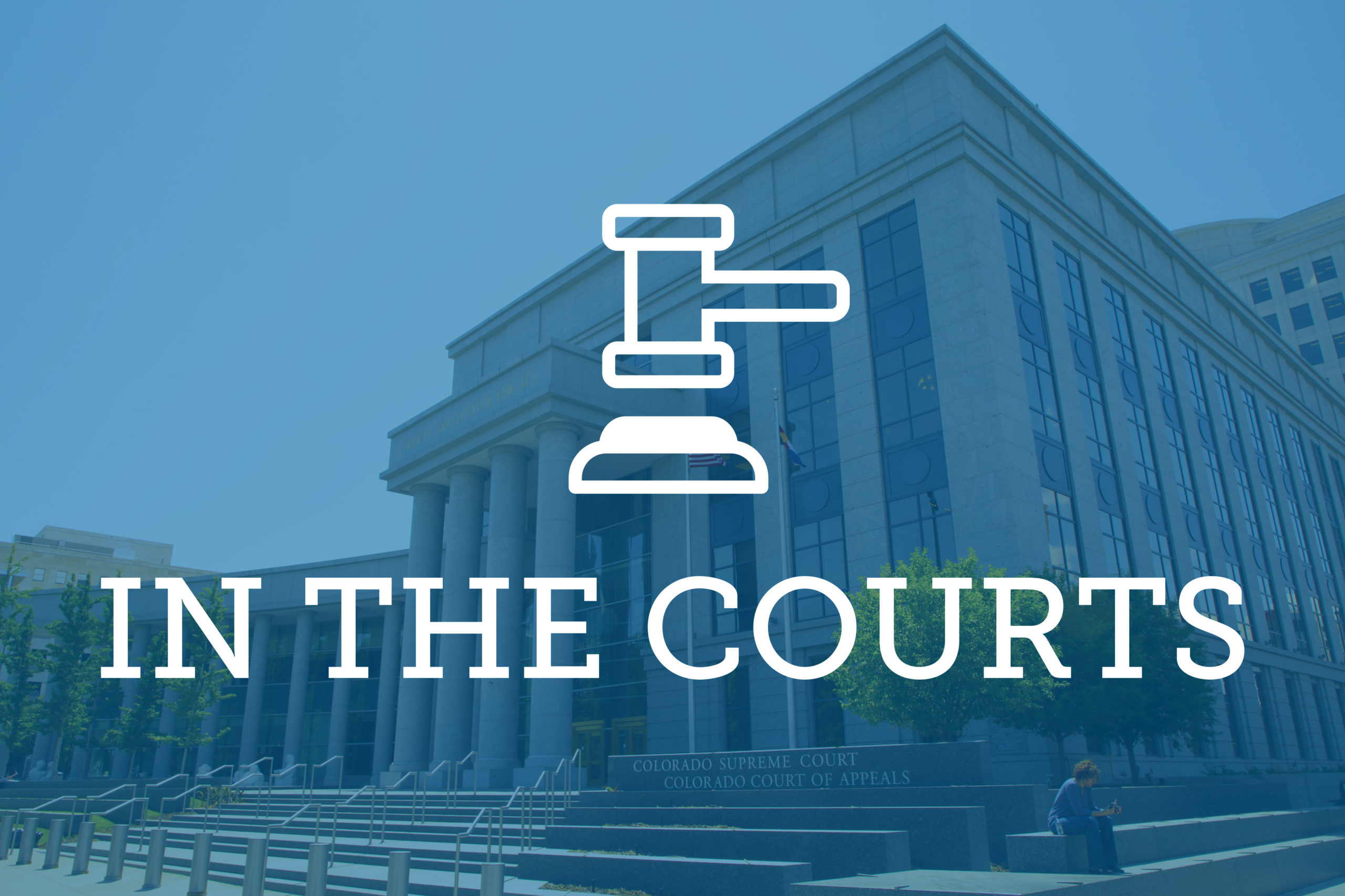
Colorado’s system of judicial retention elections rarely garners much attention. Judges themselves aren’t allowed to campaign for their retention, and organized opposition to keeping them on the bench is rare. So that makes a $224,000 donation by Denver attorney Frank Azar to a campaign for unseating a district court judge stand out.
But in a June 18 decision, the Court of Appeals concluded the judge need not recuse himself from an insurance bad faith case involving Azar.
After a trial court hearing, plaintiff Lyubov Bocian moved to disqualify the judge, because she claimed Judge Edward Moss had shown bias against the firm representing her, Franklin D. Azar & Associates. Among the claims were disparaging comments against the firm and lawyers in previous cases, hostile questioning of an expert during a hearing and Azar’s personal donation against Moss’s retention. A jury later found Owners Insurance Company had breached the insurance contract with Bocian but didn’t act in bad faith, Bocian appealed the denial of her motion for recusal.
The Court of Appeals’ decision doesn’t make any new law about judge recusals. Even so, Scott Bales, executive director of the Institute for the Advancement of the American Legal System and former chief justice of Arizona’s Supreme Court, said this is a rare appellate decision about a judge’s recusal because of contributions against a retention election. He added that different states’ rules about recusal in the context of campaign contributions all address campaigns to support a judge’s election rather than to unseat them.
“The reason is reflected in the Bocian opinion, that there’s a concern that if money spent in opposition to a judge itself triggered recusal, it would invite judge shopping,” Bales said. “It gives people the opportunity to avoid the judges they dislike by spending money to oppose them.”
Even Utah’s rule, which is strict that a judge must recuse themselves when a lawyer or their law firm has contributed more than $50 to the judge’s retention in the past three years, doesn’t mention contributions against retention.
The Court of Appeals looked to a bellwether decision from the U.S. Supreme Court for judge bias, Caperton v. A.T. Massey Coal Company from 2009 out of West Virginia, in which a litigant contributed $3 million to a judge’s campaign. The court concluded actual bias is a risk “when a person with a personal stake in a particular case had a significant and disproportionate influence in placing the judge on the case by raising funds or directing the judge’s election campaign when the case was pending or imminent.”
But the Court of Appeals followeds the Caperton decision’s caveat that not every campaign contribution by a litigant or lawyer creates a risk of bias that merits recusal.
“The West Virginia case was probably the most extreme illustration, where you had … one of the parties in litigation spending more money to secure the election of the Supreme Court justice than the justice and his opponent spent together,” Bales said.
The decision distinguished Bocian’s case from Caperton because her statements about Azar’s contribution didn’t put it in context of the total amount spent in the election and the contribution’s effect. Azar made the contribution to the campaign to unseat Moss months after the litigation in Bocian’s case started, the court also noted.
“Notably, given that the trial judge was ultimately retained, Bocian offers nothing to show that Azar’s contribution had an effect on the election,” wrote former Colorado Supreme Court Justice Alex Martinez in the opinion, who was assigned to the case by Chief Justice Nathan Coats. “Rather, Bocian’s motion simply states the $224,000 contribution was ‘significant’ and ‘unprecedented,’ which are merely opinions not legally sufficient to require disqualification.”
Holland & Hart partner Chris Jackson said the rarity of organized opposition to judge retention in Colorado is a significant reason for the dearth of related appellate law, prompting the Court of Appeals’ reliance on the Caperton precedent.
“The broad principles are really well developed about, you know, judges can’t be either biased or have the appearance of bias when they’re deciding cases,” he said. “But there aren’t a lot of other examples or cases for the court to go off of in trying to analyze this particular issue.”
He added that because the Court of Appeals didn’t focus its analysis on the significance of differences between retention elections and direct elections of judges, the decision doesn’t have broad implications about retention elections as a system or the goal of mitigating judicial corruption.
“And I think because the court didn’t go into a lot of detail about that issue … that it’s probably a more narrow decision in that sense,” Jackson said, adding that Colorado’s merit selection and retention systems help to check judicial corruption because “you could kick out a particular judge, but the way that they’re actually selected is through a process. So even if the judges removed, there isn’t a direct vote about who fills their space or their slot.”
—Julia Cardi

